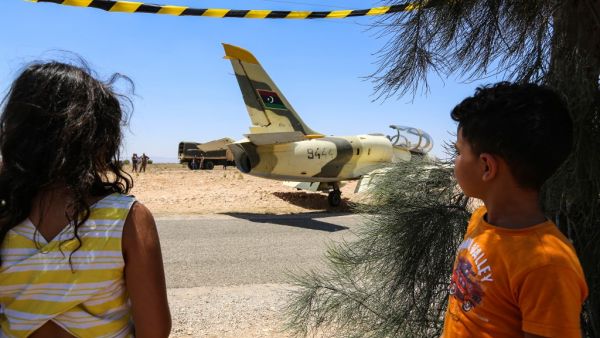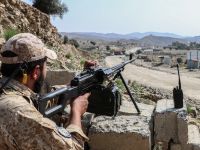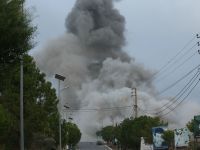Cautious calm prevailed Tuesday on Tripoli’s southern outskirts after a day of fierce clashes between Libya’s rival political camps.
Forces of the UN-recognized Government of National Accord (GNA) said they had repelled a military offensive by East Libya-based militia led by commander Khalifa Haftar in southern Tripoli on Monday.
The Tripoli-based government said its forces had captured 11 members of Haftar’s forces during the violence.
A military source said GNA forces "still maintain their positions in most of the fighting spots in southern Tripoli except for Ain Zara where Haftar forces made minor gains."
The source, who spoke on condition of anonymity due to restrictions on speaking to the media, told Anadolu Agency that warplanes were still flying in the areas of clashes, without elaborating.
Since early April, forces loyal to Haftar announced the launch of a campaign to capture Tripoli from GNA forces.
{"preview_thumbnail":"https://cdn.flowplayer.com/6684a05f-6468-4ecd-87d5-a748773282a3/i/v-i-c…","video_id":"c27aa0c4-c76f-4fde-9267-f97236f1d56f","player_id":"8ca46225-42a2-4245-9c20-7850ae937431","provider":"flowplayer","video":"Death Toll From Airstrikes on Syria's Idlib up to 50"}
Clashes between the two sides since then have left more than 1,000 people dead and about 5,500 wounded, according to the World Health Organization (WHO).
Libya has remained beset by turmoil since 2011, when long-time ruler Muammar Gaddafi was ousted and killed in a bloody NATO-backed uprising after four decades in power.
The oil-rich country has since seen the emergence of two rival seats of power: one in eastern Libya, with which Haftar is affiliated, and the Tripoli-based GNA, which enjoys UN recognition.
This article has been adapted from its original source.








